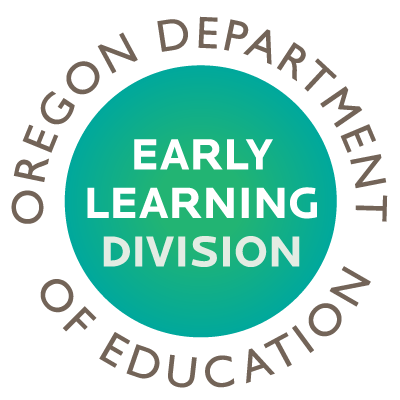News
(Salem, Ore.) – Today, the Early Learning Division (ELD) released an update to guidelines for child care and early education operations during COVID-19 developed in partnership with the Oregon Health Authority. They use the latest data and best practices to protect the health and well-being of staff, children, and families in child care.
“Child care and early education is essential to healthy development and is also an important support to working families and our state’s economic recovery,” said Oregon Early Learning System Director Miriam Calderon. “The updated guidelines reflect the need to ensure safe and quality child care is available for families, especially in communities hardest hit by the virus. There is also an equally important need to ensure that children, families and child care providers are safe as child care remains open throughout the pandemic.”
Since March, child care facilities open to serving families in Oregon must be approved by the ELD to operate Emergency Child Care (ECC) and have been required to follow increased safety and health protocols. Governor Kate Brown’s order for ECC operations remains in effect until lifted.
Engagement with more than 3,000 parents and 400 child care providers via a survey, along with small group input sessions with providers, school districts and key partners, helped inform updates to the guidelines. A Healthy Early Learners Council, convened by Governor Brown and made up of providers, parents, public health experts and other community leaders, also provided feedback for guideline development.
Some of the key updates include:
Increased Use of Personal Protective Equipment
With a few exceptions, child care staff and children who are in grades Kindergarten and up are required to wear face coverings. Research indicates wearing face coverings helps control the spread of the virus, particularly indoors.
Adjusted Group Size
The guidelines allow for increases in group sizes within child care programs based on county phase for preschool and school-aged children. Families need safe, quality child care opportunities so they can work. Limited group size means far fewer child care slots to support families, and many providers are under financial strain with reduced group sizes.
New Family Engagement and Health and Safety Plan Sections
Two new sections include requirements to ensure parents are informed and provided information in a manner they can understand. Some examples include communicating about changes to operations during COVID-19, drop-off and pick-up procedures, and the latest public health guidance. Facilities must also have a written Health and Safety Plan, which includes a focus on training and communication with staff and families associated with the facility.
The updated guidelines take effect beginning September 1, 2020. For the latest child care FAQs and information, go to ELD’s COVID-19 webpage.
###



